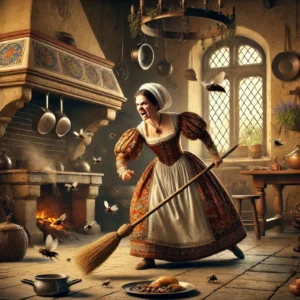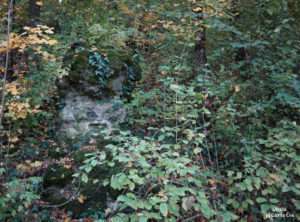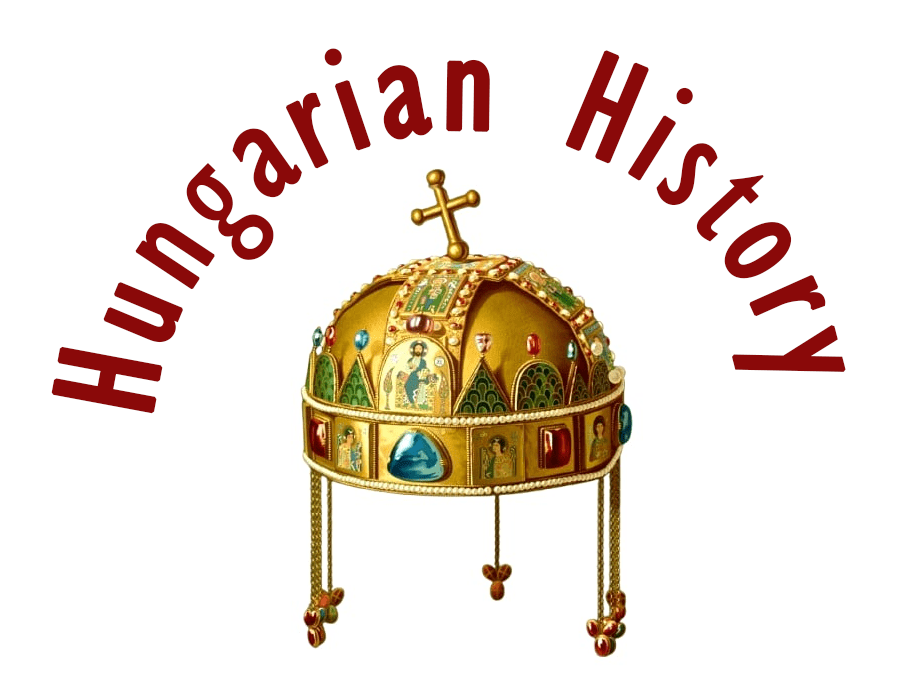Görgényszentimre
Görgényszentimre (Gurghiu, Görgen or Sankt-Emrich) is a village in Romania, in Maros (Mures) County. It is located in the northeastern part of the county, in the valley of the Görgény River, 12 km away from Szászrégen (Reghinul Săsesc, Rennmarkt) and 40 km away from Marosvásárhely (Târgu Mures). It is famous for the ruins of Görgény castle.

Photo: SahkuRO
The defense and fall of the castle also inspired a folk legend, described by Kőváry László as follows:
„This castle was held by giants who were attacked by enemies. According to the legend, the siege lasted a long time. Finally, an old woman came and told the besiegers that the castle would be impregnable until the captain of the giants fell. And as the captain could not be shot, she gave her advice: “The captain goes every day to the chapel of the castle to pray; there he may be cut down; but only one man can kill him, who is the seventh son of his mother, and all his six brothers are alive; he shall take a straw of clean wheat, and at the first ray of the new moon he shall cast a bullet at this straw, and it shall pass through the giant. The enemy followed this advice… the captain of the giants fell… The chiefless giants could no longer defend the castle. Some of them escaped and went to Hungary, where their giant descendants still live. The other part took wings and flew away…”

Part of a mural of Visconti’s picture
How it looked like and looks like now
Near the village rises the cone-shaped Várhegy (Castle Hill). At the top, where a serpentine road leads to, some parts of the castle’s foundation wall and the roof of a cellar can be seen. The castle, which covers an area of about three hectares, was built of river stones held together with chalk on the volcanic tuff of Rákóczi (Dealul Cetății) Hill, 500 meters above the village and 70 meters high. Its shape is an irregular rectangle running east-west, and it was originally defended by six bastions: the Gate, (Kapu) Catfish Tail (Harcsafark), Round (Kerek), Red (Veres), New (Új) and Stream (Patak). In the courtyard, there were residential and agricultural buildings. The bottom of the hill was protected by a double wall with a battlement in between, which could be filled with water. While the castle stood, the hill was barren; only after its destruction in 1708, the forest began to grow over it.

Photo: Kovács Attila
A document from 1652 gives a detailed description of the interior of the castle and its inventory. The walls were 8 to 12 meters high, with three gates (lower, middle, and old), the main gate structure was protected by a drawbridge and battlements. A winding road led up the hill. In the castle, the Darabont house, the shophouse, the storehouse, the dining palace and other “palaces”, the arsenal, the Horgas house, the cistern, and the bastions were mentioned. The equipment includes a wide variety of rifles and cannons (with more than 24,000 cannonballs).

Photo: www.e-nepujsag.ro
An inventory of 1688 describes the manor house, the first building inside the gate of which is the Darabont or guardhouse, followed by a series of farmhouses and servants’ houses, then the manor houses and inferior stone houses. After the description of the buildings, the garden, the philagoria, the stables, the main house, etc. are described and the stocks were inventoried. The castle was defended by 51 soldiers, divided into three groups of ten.
History
We do not know when the castle was built. It was built on the foundations of an earlier fortress whose origins are unknown. Vass József mentions the opinion of Johann Michael Ackner that there was a Roman fortress here. Ipolyi Arnold comes to a similar conclusion. They found an inscribed stone on which Aurelius Sabinus commemorated his incomparable wife Priscilla.

According to some opinions, the medieval fortress was rebuilt in stone on the foundations of the old fortress after the conquest of Hungary in the 9th century or after the organization of the counties. It was once a royal castle and as such it was always under the control of the Transylvanian Voivode or the Székely Comes. These two offices were usually held by the same person.

Photo: www.e-nepujsag.ro
It is one of the oldest settlements of the Görgény region, first mentioned as Gurgen in 1248. Its history is intertwined with the history of the Görgény Manor and the Görgény Castle. In the 13th century, the Görgény treasure estate was established with its center in Görgényszentimre to exploit the mineral and natural resources. It was the easternmost estate in Transylvania, covering about 1% of the territory. In the 13th and 14th centuries, it was referred to as Gorgen, Gurghyn, Georgen, Goergeny, Geworgeij, etc.

Some sources date the fortification of the castle to the early 14th century, during the reign of King Károly Róbert when the internal wars made it necessary to establish a royal center on the Upper Maros River. The oldest, square part of the medieval castle was built at that time, and the Old Gate can be dated to the same period. Later, it was the seat of the Székely Comes (the latter was first mentioned in a document in 1357), and later it was the property of the Prince of Transylvania.

Photo: Csedő Attila
In the 14th century, fortresses were built in Transylvania to meet military needs. Among the best known are the castles of Küküllővár (1335), Gyalu (1373) and Görgényszentimre, built before 1364. In 1443 King Ulászló I donated the castle to the Transylvanian voivode Hunyadi János. However, in 1445, when Frederick of Cille and his son Ulrik signed a mutual inheritance treaty with the Transylvanian voivode Újlaki Miklós, Castrum Gergin was included in the latter’s property. It was enlarged in the first half of the 15th century, probably under the rule of Hunyadi János, when the double wall system and the lower and middle gates were built.

Photo: Dóczi Zsófia
The name Zenthemreh (Szentimre) appeared for the first time in 1453; after Matthias came to the throne, it became a royal fortress. Görgényszentimre, as a manorial center and castle, had the right to be a market town, i.e. it was one of the oppidums, first mentioned as such in 1453, and was a market town until 1886. In 1526 the title of Székely Comes was abolished, but after the establishment of the Principality of Transylvania, the princes also took the title of Székely Comes and took over its rights and possessions. At the same time, the estate became a princely estate instead of a royal one.

After the Battle of Mohács (1526), the castle became the property of King Szapolyai János and was the favorite hunting ground of the young János Zsigmond, who was later transported from here to Gyulafehérvár, where he died of an incurable disease on March 14, 1571. Queen Isabella received the estate as a betrothal present from King Szapolyai János, whose coat of arms was still visible to the castle’s inventory officers in 1652.

In addition to its economic role, the castle was also of military importance and was renovated several times by Queen Isabella of Hungary, Transylvanian Chancellor Kovacsóczy István, Transylvanian Princes Bethlen Gábor and Rákóczi György I. In 1557, 27 villages belonged to it, and from 1562 another seven (although they regained their freedom in 1602).

Báthori István carried out some work on the castle in 1572-1573, but we do not have any detailed information about it. Görgény was acquired by the chancellor Hagymási Kristóf in 1585, and half of it was mortgaged by Kovacsóczy Farkas. It is known that Hagymás took part in the rebellion against the prince, and therefore Báthori Zsigmond had him arrested together with the opposition nobles in 1594, and ten of them – among them Hagymás and Kovacsóczy – were executed.

In 1595 Báthori donated the castle to his uncle Bocskai István, after his death the building became the property of the State Treasury. In 1602 the castle is mentioned as Szent-Imreh. Kovacsóczy Farkas’s son István became the secretary of Prince Bethlen Gábor and was appointed several times as ambassador abroad, and later as chancellor. In return for his loyalty to the prince, he received back his father’s estates in Görgény, which were inherited by his wife Telegdy Zsófia and her daughter Petki Istvánné called Kata after he died in 1634.

The other half of the castle might have belonged to Barcsay Zsigmond, because in 1638 Prince Rákóczi György I gave it to Allia Sámuel and his wife Lórántffy Kata for 29 thousand forints, with the condition that they pay 12 thousand forints to Barcsay. It seems that in the meantime two parts had been merged, because, on September 25, 1643, the prince pledged it to Kovacsóczy Kata, by then already married to Bálinti György, in case of the death of his own younger son, Rákóczi Zsigmond, for 40 thousand forints.

Photo: Dóczi Zsófia
The princes liked to stay in Görgényszentimre. Rákóczi György did the most for the castle: between 1639 and 1641 he fortified it considerably and equipped it with modern cannon emplacements to defend against expected attacks. It was during this period that the castle took on its final form. Rákóczi is also credited with the construction of the Veres Bastion.

Szalárdi wrote about the construction of Rákóczi: “…the castle of Görgény, which can only be said to have been damaged by shelling from the vineyard from the north, had a very strong, double-winged old battlemented with a very strong stone rampart erected to protect it. … … the town of Görgényszentimre had new houses built under the hill of the castle on the hill of Görgényszentimre, and on the part of the hill of the castle on the eastern side a very large forest was cut down and this area was turned into fields for growing hay…”.

Photo: Dóczi Zsófia
Due to its remote location, the castle had no imposing residences or palaces, and very little is known about the life and courtly life here. In 1638, Görgény came into the hands of Prince Rákóczi György I who built the bastion of the northern rampart. He used no less than 3,000 wagons of stone that were brought up to the castle for his construction work. It was thanks to this modernization that the Kuruc forces were able to hold it for more than 5 months, during an extremely heroic – not to mention bloody – battle (read about it later). In 1642, the prince had the Rákóczi Palace built at the foot of the castle hill. , it was also part of the modernization of Görgény castle. The noblemen’s estates were the center of the village. At the same time, the other inhabitants (Romanian and Székely peasants), who served the castle as soldiers or maintenance workers, built their houses on the outskirts of the village.
The life in Görgény in the 17th century
In 1972, a wooden chest full of books was found on the ceiling of the Reformed Church in Görgényszentimre. It was this box that was opened in the autumn of 2023 by the staff of the Mures (Maros) County Museum, namely Florian Ciorba and Alexandru Pop, who were resting in the local guesthouse during the Teleki Samu commemorative tour. According to them, there were some prayer books from the early 19th century, but otherwise nothing special. Among the pages of one of the books, however, they found a sensational find: a yellowed page containing the edict of the Regulations of Görgény Castle from the end of 1703, the instructions of Mrs. Teleki, who was then enjoying the ‘hospitality’ of General Rabutin in Görgény. This is a special document about the morals of that time. Here is an extract from the rules of the castle:
“…It has come to my attention that the use of unclean words has become particularly rampant among the castle’s soldiers, both those who live in the castle and those who occasionally serve in the castle. As this uncultured, ungodly language is not worthy of our castle servants, I order the following to be observed by all:
Mention of fecal matter – 8 strokes of the cane
– Same in diluted form – 15 strokes
– A whore with one adjective – 15 strokes
– A whore with two adjectives (e.g. rotten son of a bitch whore) – 20 strokes
– Offering a sitting part of the body for hiding – 20 strokes
– Offering a seated part of the body for cleaning with the tongue – 25 strokes
– Mentioning a whore in connection with Lord Teleki and the Castellan’s female relatives – 30 strokes…”

And did it all have a consequence? For an answer, we can find something very funny in the diary of Teleki Mihály, who was still a comrade-in-arms with Rabutin at the time. It described how, because of a large poultry killing, more flies than usual annoyed the people of Görgény, and a minor scandal of sorts was caused when the young, fierce Mrs. Teleki was chasing the flies, rhythmically repeating:
“Whore flies. Here you are, flies. I’ll be a whore. No, I’ll not be…”. In the Hungarian language it sounds like this: „Kurva legyek. Ne, ne legyek. Kurva legyek. Ne, legyek…”
The listening preacher from the castle told her to decide whether she wanted to be a whore or not. In the end, it was not revealed whether the young lady who used the forbidden slang word, or the priest at the humor, was scolded, or whether they just turned a blind eye to this unprecedented incident and let the whole thing pass their ears…

Photo: Dóczi Zsófia
The castle was destroyed during the Rákóczi War of Independence (1703-1711). It fell to the rebels at the beginning of the uprising, was lost after the Battle of Zsibó in 1705, but was retaken in the spring of 1706. In October 1707, the troops of Jean Rabutin began to besiege it, and on October 10, Colonel Kaltemplat brought 500 infantry, 500 horsemen, cannons, and ammunition, and later another 500 armed men arrived. The castle was defended by a hundred (or sixty) so-called “palotás hajdú” (elite court troops of the prince) under the command of Ráthonyi János, the castle captain. During the siege, the castle was badly damaged and both Kaltemplat and Ráthonyi were killed. With the death of Ráthonyi, the defenders sallied from the castle and fled on March 10, 1708, abandoning the castle, whereas Rabutin had it destroyed.
Let’s take a closer look at this brave deed, based on the research of Szibler Gábor:
March 10, 1708 After the fall of Captain Ráthonyi János, the defenders of Görgény break out of the castle
On December 15, 1705, he was sent to Huszt to defend the castle. Shortly afterward he married Nagyidai Anna (February 16, 1706), with whom he had at least two children.



Photo: Lánczi Imre

Photo: Csedő Attila
The last days of Görgény Castle
Some of the stones from the castle were used for the renovation of the Rákóczi-Bornemisza Palace in the village. In 1730 a small chapel was built from the stones of the castle on the top of the hill. In the 1860s the canon of Eger, Kovacsóczy István, had it rebuilt in memory of one of his ancestors, Kovacsóczy Farkas, who was executed by Báthory; this is also the date of the tower. Later the chapel fell into disrepair, but in the 20th century, it was repaired and declared a monument.

Photo: Csedő Attila
In 1869 the estate was returned to the State Treasury, and the Rákóczi Mansion became the hunting lodge of Prince Rudolf, and later a school was established there. In the second half of the 20th century the Hungarian population, which had been in the majority until then, emigrated.

Photo: Csedő Attila
At the beginning of the 21st century, only the foundations of a few towers and traces of sections of the wall remained. The northern and northeastern sections of the wall remain several meters high in places. It is noticeable that the remains have not been completely removed and demolished, just not excavated and cleared of vegetation. If you did not know that there was a castle up there, it would not be very noticeable. However, the ruins cover several meters of walls, for example, the top of a Gothic gate is visible, and many carved stones can be found scattered around, as not everything has been removed.

Photo: Csonla Éva (Uticélok)
In 1910, of the 1817 inhabitants of Görgényszentimre, 1215 were native Hungarians and 560 were native Romanians. While in 1941 56% of the population was Hungarian, in 2011 it was only 12% (240 Hungarians, 1,283 Romanians, and 419 Gypsies out of 1,929 inhabitants). You can see the former image of the Görgény Castle from the margin of a large map of Transylvania published in Nagyszeben in 1699 by the military engineer Lieutenant-Colonel Giovanni Morando Visconti, deputy of the great Luigi Ferdinando Marsigli:

Sources: Hungarian Wikipedia, Szibler Gábor, Kiss Gábor,Csedő Attila https://csedoa.blogspot.com/2018/01/gorgenyszentimre-barangolas-vegeken.html and https://e-nepujsag.ro/
Dear Readers, I can only make this content available through small donations or by selling my books or T-shirts.
If you like my writings, please feel free to support me with a coffee here:
You can check out my books on Amazon or Draft2Digital, they are available in hardcover, paperback, or ebook:
https://www.amazon.com/dp/198020490X
or at https://books2read.com/b/boYd81


My work can also be followed and supported on Patreon: Become a Patron!http://Become a Patron!
 My T-shirts are available: https://hungarianottomanwars.myspreadshop.com/all
My T-shirts are available: https://hungarianottomanwars.myspreadshop.com/all
Here are a few pictures of the ruins of Görgényi castle and the Rákóczi palace in the village:




























